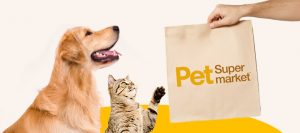When you adopt a puppy, there are many aspects to manage: socialization, possible mischief, training, walks, play sessions, petting, but above all, cleanliness!
Yes, a puppy who doesn’t answer his name yet, it’s ok. A puppy who is still not clean, it’s constraining.
For obvious hygiene reasons or simply for your comfort, I propose you here to discover all my advice to make your puppy clean!
20 tips to get your puppy clean quickly
Tip #1: Be patient! Up to 6 months of age, your puppy may still have difficulty holding on. But, eventually, your puppy will be able to hold it in thanks to his sphincters, which he will have learned to control.
Tip #2: You can already “train” your puppy to control his sphincters, but very gradually. Indeed, assuming that a dog will not go to the bathroom, you can leave him in his sleeping place for a long time.
Tip #3: Be attentive and vigilant in anticipating the times when your puppy will want to relieve himself. It’s simple, and he’ll mainly want to go after his meal, after a nap or a play/exercise session.
Tip #4: Knowing this, as soon as you see your puppy running around in circles, with his nose on the ground, act quickly and accompany him outside or possibly on his toilet mat if you are in an apartment on the 10th floor. Of a building without an elevator. For example!
Tip #5: Concerning the potty mats, I recommend them only in case of extreme necessity because you risk teaching your puppy that he can do his needs on all the mats. So if you have the choice, avoid using this kind of tool which will not teach your dog not to do his needs inside. Instead, it will just teach him that he can do his business as long as there is a mat under his paws.
Tip #6: Choose quality food for your puppy, the “cheap” kibbles from supermarkets will make your pet’s digestion difficult, and he will have more stools.
Tip #7: Still on the subject of feeding your puppy, I recommend that you feed him at fixed times (two to three times a day) so that he can find his rhythm (and you too). Above all, don’t leave your puppy’s bowl out. Leave him his bowl for 20 to 30 minutes maximum, then, finished or not: remove the bowl!
Tip #8: Concerning water, it is, of course, recommended to leave a water bowl at will (especially during hot weather). However, when potty training, you can control this by offering your puppy water regularly but not allowing him to drink at will. This will give you more control over your pet’s bladder. Note, of course, that this advice is not applicable if it’s 35°C! However, this can be done with a good dose of common sense and kindness towards your pet!
Tip #9: When your puppy arrives at home, it is also recommended to forbid access to certain rooms in the house so that he doesn’t take over the whole space. Moreover, this advice also applies to allow the puppy to better live your absences. And yes, learning to be alone starts when your puppy is very young, even when you are at home (but not in the same room).
Tip #10: If you discover mischief being made in your absence (on your way home from work or in the morning when you wake up, for example), it’s normal, so don’t give up! And above all, don’t scold your puppy. Instead, respect the “not seen, not taken” rule. Never forget that a dog is an animal that lives in the moment, so he won’t understand why he is being punished! If you do this, you will become an inconsistent and unfair being for him. Therefore, it is recommended to ignore your puppy when you see that he has made a mistake, even if it is not obvious in certain circumstances!
Tip #11: Sometimes, we set our puppy up for failure without meaning to because we leave him too long without the opportunity to relieve himself. Remember, your puppy has not yet learned to control his sphincters.
Tip #12: For the night or small absences during the day, you can always use a transport crate or an indoor kennel, which will allow your puppy to restrain himself because he will not, normally, do his needs in his sleeping place. Attention, this advice is to be taken into account only if you have accustomed your puppy to the transport cage beforehand. Do not hesitate to consult our article dedicated to this subject!
Tip #13: If you see your puppy doing his business, act directly, don’t wait until he’s done. Say a firm “no” and accompany him outside. If by chance he finishes his business outside, praise him profusely!
Tip #14: Regarding praise, don’t be afraid of ridicule and reward your dog warmly as soon as he does his business outside. It will be much more effective and productive to reinforce good behaviour than to punish bad behaviour.
Tip #15: As for praise, don’t reward your puppy while he’s doing his business, as this could turn him off and stop him cold. Instead, reward him right after he’s done. Above all, be precise in your timing because, as we’ve seen, dogs are animals that live in the moment.
Tip #16: Never clean up your puppy’s faeces or urine in front of him. He’ll take it as a call to play and will happily do it again!
Tip #17: Of course, don’t clean up your puppy’s stool or urine with a bleach-based product, as this will attract him more and encourage him to relieve himself in the same place again.
Tip #18: Also, don’t put your puppy’s nose in his poop. This is very humiliating and serves no purpose at all! When you do this to your dog, he might adopt the reflex of eating his excrement to erase all traces and especially to avoid this kind of attitude from you afterwards.
Tip #19: On the other hand, if you want your dog to always do in the same place in your garden, for example, I advise you to leave some stools in the place you have chosen. This way, your puppy will be attracted by the smell, and this will encourage him to do his business in that place.
Tip #20: To conclude, be patient, take your puppy out regularly at strategic times, offer him quality food and have a fair and adapted attitude towards him.



